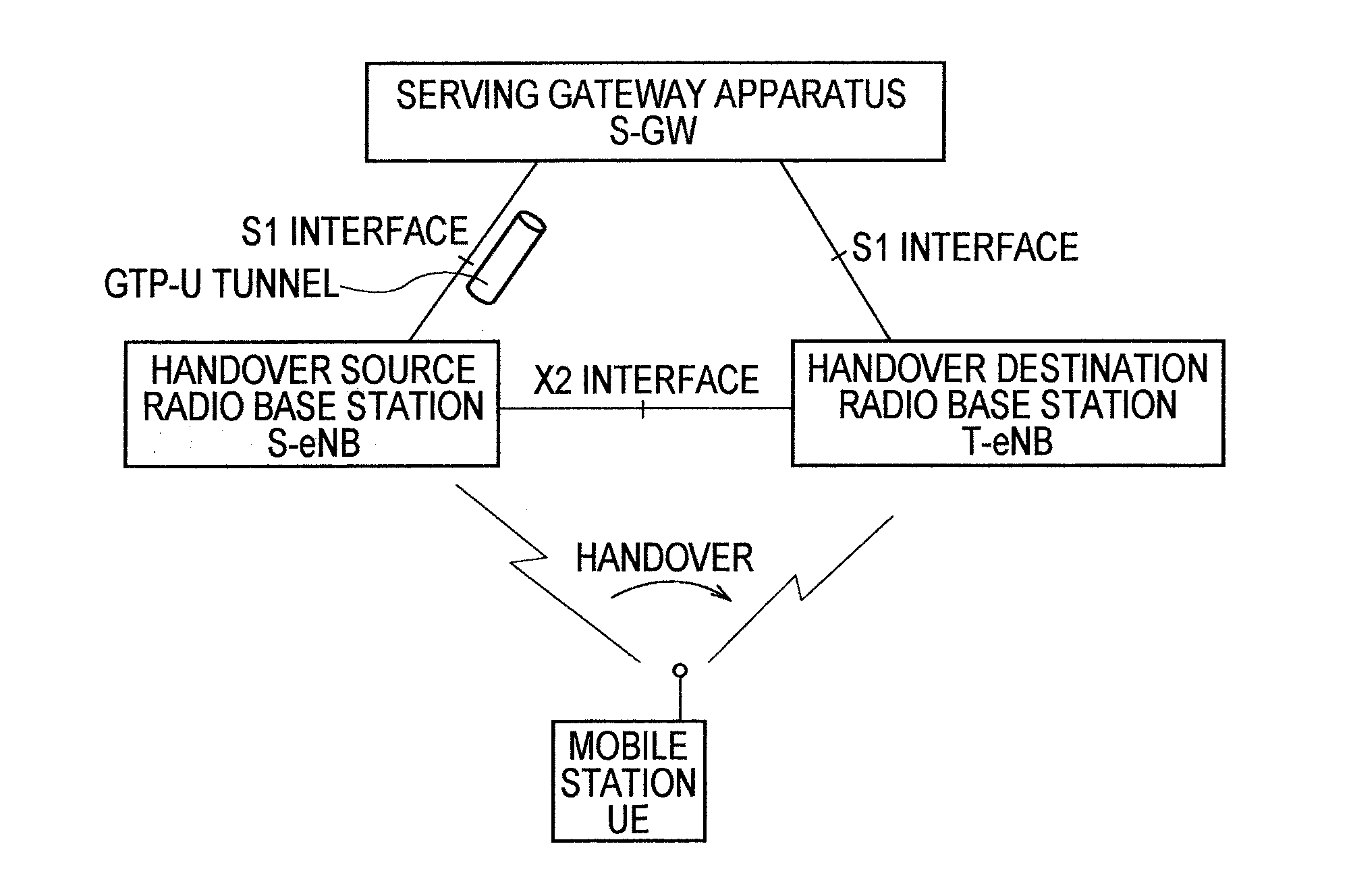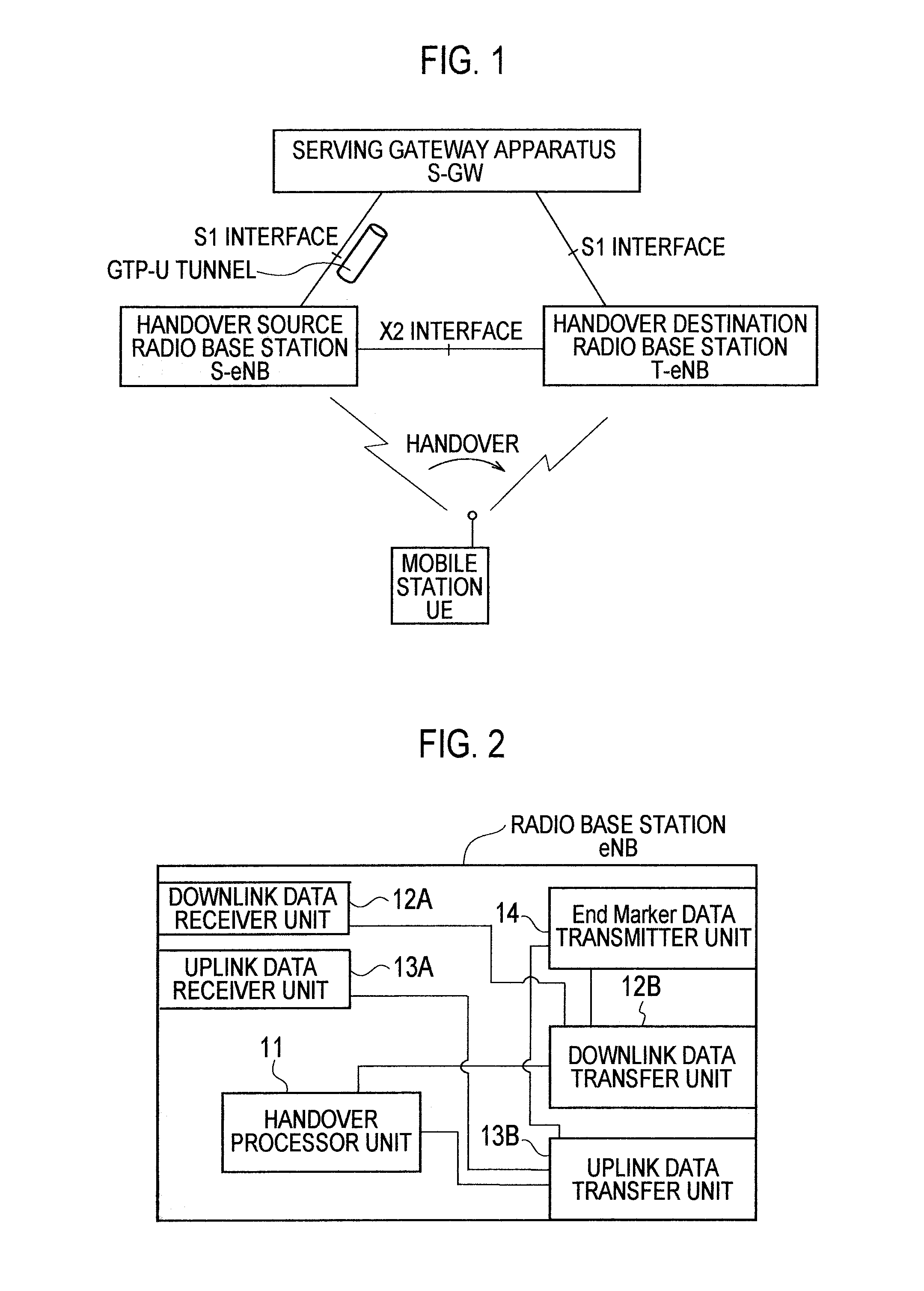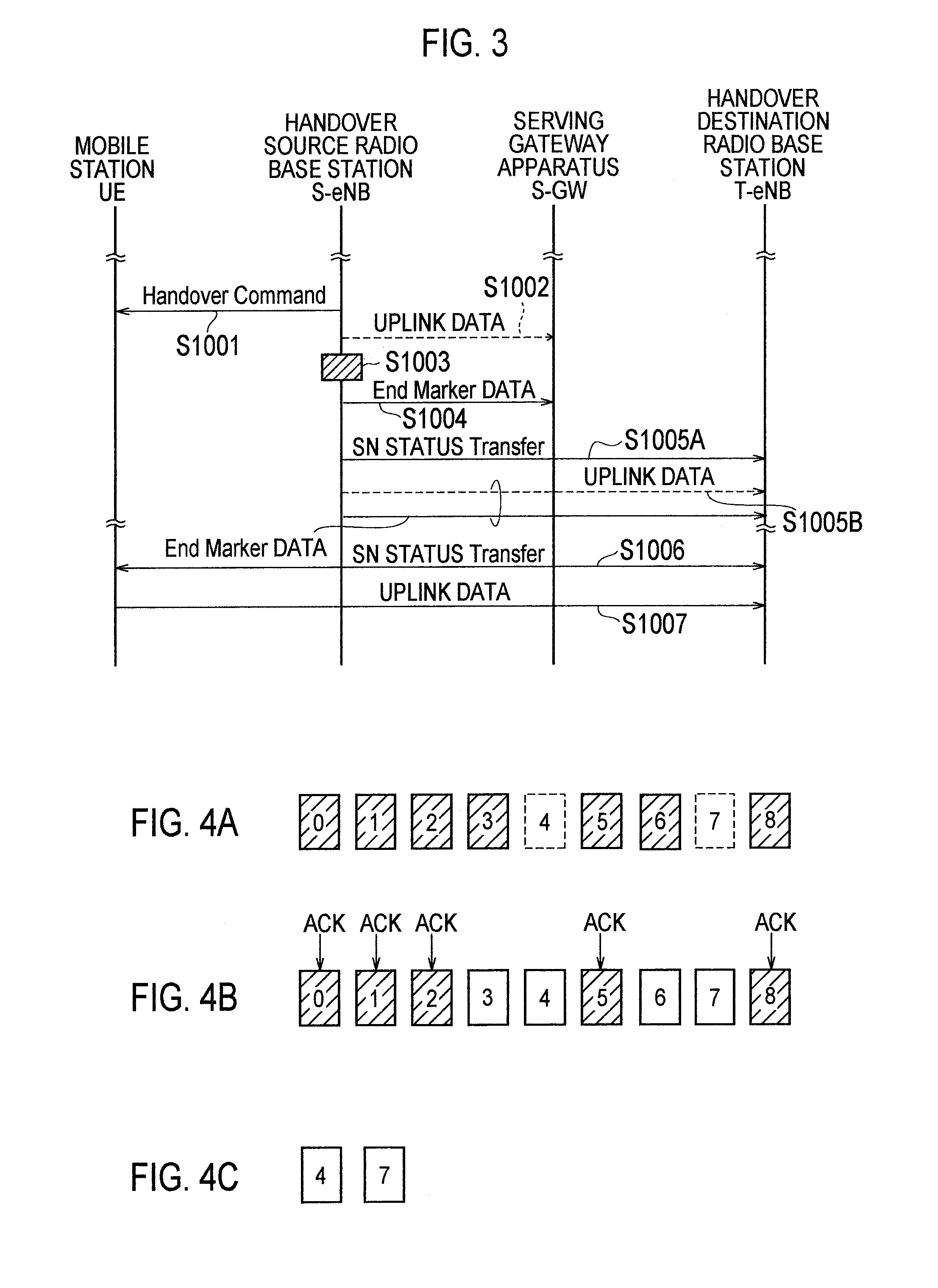Mobile communication method and radio base station
a mobile communication and radio base station technology, applied in the field of mobile communication methods and radio base stations, can solve the problems of mobile communication systems employing lte systems, the service gateway apparatus s-gw cannot know how long the serving gateway apparatus s-gw can wait,
- Summary
- Abstract
- Description
- Claims
- Application Information
AI Technical Summary
Benefits of technology
Problems solved by technology
Method used
Image
Examples
first embodiment
(Mobile Communication System Of Present Invention)
[0036]A mobile communication system according to a first embodiment of the present invention will be described with reference to FIGS. 1 and 2.
[0037]In this embodiment, a mobile communication system employing the LTE (Long Term Evolution) system is used as an example to describe the embodiment. However, the present invention is applicable to a system other than the aforementioned mobile communication system.
[0038]As shown in FIG. 1, in this embodiment, a description will be given of an example of a case where a mobile station UE performs a handover (X2 handover, Inter-eNB handover) from a cell (handover source cell) controlled by a handover source radio base station (first radio base station) S-eNB to a cell (handover destination cell) controlled by a handover destination radio base station (second radio base station) T-eNB.
[0039]As shown in FIG. 2, a radio base station eNB according to the first embodiment includes a handover proce...
second embodiment
(Mobile Communication System of Present Invention)
[0068]A description will be given of a mobile communication system according to a second embodiment of the present invention with reference to FIGS. 5 through 7. In the following description of the mobile communication system according to the second embodiment, the mobile communication system will be described focusing on differences from the mobile communication system according to the first embodiment described above.
[0069]As shown in FIG. 5, in this embodiment, a description will be given of an example focusing on downlink data of a case where a mobile station UE performs a handover (S1 handover, Inter-eNB handover) from a cell (handover source cell) controlled by a handover source radio base station (first radio base station) S-eNB to a cell (handover destination cell) controlled by a handover destination radio base station (second radio base station) T-eNB.
[0070]In this embodiment, the End Marker data transmitter unit 14 of the...
third embodiment
Mobile Communication System of Present Invention)
[0086]A description will be given of a mobile communication system according to a third embodiment of the present invention with reference to FIGS. 5, 8 and 9. In the following description of the mobile communication system according to the third embodiment, the mobile communication system will be described focusing on differences from the mobile communication system according to the first embodiment described above.
[0087]As shown in FIG. 5, in this embodiment, a description will be given of an example focusing on uplink data in a case where a mobile station UE performs a handover (S1 handover, Inter-eNB handover) from a cell (handover source cell) controlled by a handover source radio base station (first radio base station) S-eNB to a cell (handover destination cell) controlled by a handover destination radio base station (second radio base station) T-eNB.
[0088]In this embodiment, the uplink data transfer unit 13B of the handover so...
PUM
 Login to View More
Login to View More Abstract
Description
Claims
Application Information
 Login to View More
Login to View More - R&D
- Intellectual Property
- Life Sciences
- Materials
- Tech Scout
- Unparalleled Data Quality
- Higher Quality Content
- 60% Fewer Hallucinations
Browse by: Latest US Patents, China's latest patents, Technical Efficacy Thesaurus, Application Domain, Technology Topic, Popular Technical Reports.
© 2025 PatSnap. All rights reserved.Legal|Privacy policy|Modern Slavery Act Transparency Statement|Sitemap|About US| Contact US: help@patsnap.com



